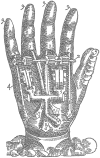The current state of bionic limbs from the surgeon's viewpoint
- PMID: 32175092
- PMCID: PMC7047902
- DOI: 10.1302/2058-5241.5.180038
The current state of bionic limbs from the surgeon's viewpoint
Abstract
Amputations have a devastating impact on patients' health with consequent psychological distress, economic loss, difficult reintegration into society, and often low embodiment of standard prosthetic replacement.The main characteristic of bionic limbs is that they establish an interface between the biological residuum and an electronic device, providing not only motor control of prosthesis but also sensitive feedback.Bionic limbs can be classified into three main groups, according to the type of the tissue interfaced: nerve-transferred muscle interfacing (targeted muscular reinnervation), direct muscle interfacing and direct nerve interfacing.Targeted muscular reinnervation (TMR) involves the transfer of the remaining nerves of the amputated stump to the available muscles.With direct muscle interfacing, direct intramuscular implants record muscular contractions which are then wirelessly captured through a coil integrated in the socket to actuate prosthesis movement.The third group is the direct interfacing of the residual nerves using implantable electrodes that enable reception of electric signals from the prosthetic sensors. This can improve sensation in the phantom limb.The surgical procedure for electrode implantation consists of targeting the proximal nerve area, competently introducing, placing, and fixing the electrodes and cables, while retaining movement of the arm/leg and nerve, and avoiding excessive neural damage.Advantages of bionic limbs are: the improvement of sensation, improved reintegration/embodiment of the artificial limb, and better controllability. Cite this article: EFORT Open Rev 2020;5:65-72. DOI: 10.1302/2058-5241.5.180038.
Keywords: bionic limbs; limb amputation; prosthetics.
© 2020 The author(s).
Conflict of interest statement
ICMJE Conflict of interest statement: The authors declare no conflict of interest relevant to this work.
Figures




Similar articles
-
[Prosthetic Fitting Concepts after Major Amputation in the Upper Limb - an Overview of Current Possibilities].Handchir Mikrochir Plast Chir. 2024 Feb;56(1):84-92. doi: 10.1055/a-2260-9842. Epub 2024 Feb 28. Handchir Mikrochir Plast Chir. 2024. PMID: 38417811 Free PMC article. German.
-
Feasibility of a Wireless Implantable Multi-electrode System for High-bandwidth Prosthetic Interfacing: Animal and Cadaver Study.Clin Orthop Relat Res. 2022 Jun 1;480(6):1191-1204. doi: 10.1097/CORR.0000000000002135. Epub 2022 Feb 23. Clin Orthop Relat Res. 2022. PMID: 35202032 Free PMC article.
-
Targeted muscle reinnervation in bionic upper limb reconstruction: current status and future directions.J Hand Surg Eur Vol. 2024 Jun;49(6):783-791. doi: 10.1177/17531934241227795. Epub 2024 Feb 16. J Hand Surg Eur Vol. 2024. PMID: 38366374 Review.
-
Targeted Muscle Reinnervation for Prosthetic Control.Hand Clin. 2021 Aug;37(3):415-424. doi: 10.1016/j.hcl.2021.05.006. Hand Clin. 2021. PMID: 34253314 Review.
-
Targeted Muscle Reinnervation and Osseointegration for Pain Relief and Prosthetic Arm Control in a Woman with Bilateral Proximal Upper Limb Amputation.World Neurosurg. 2020 Nov;143:365-373. doi: 10.1016/j.wneu.2020.08.047. Epub 2020 Aug 10. World Neurosurg. 2020. PMID: 32791219
Cited by
-
Do we react differently toward bionic devices vs. cochlear implants and wheelchairs? Possible links with personality traits.Front Rehabil Sci. 2023 Jul 11;4:1159663. doi: 10.3389/fresc.2023.1159663. eCollection 2023. Front Rehabil Sci. 2023. PMID: 37496700 Free PMC article.
-
Let's fabricate ideas!Indian J Urol. 2020 Apr-Jun;36(2):75-76. doi: 10.4103/iju.IJU_95_20. Indian J Urol. 2020. PMID: 32549654 Free PMC article. No abstract available.
-
Bionic Prostheses: The Emerging Alternative to Vascularised Composite Allotransplantation of the Limb.Front Surg. 2022 May 6;9:873507. doi: 10.3389/fsurg.2022.873507. eCollection 2022. Front Surg. 2022. PMID: 35599802 Free PMC article. Review.
-
Citizenship as the exception to the rule: an addendum.AI Soc. 2021;36(3):911-930. doi: 10.1007/s00146-020-01105-9. Epub 2020 Nov 14. AI Soc. 2021. PMID: 33223621 Free PMC article.
-
The research landscape on vascularized composite allografts: a bibliometric analysis (2002-2021).Am J Transl Res. 2023 Mar 15;15(3):1569-1589. eCollection 2023. Am J Transl Res. 2023. PMID: 37056844 Free PMC article.
References
-
- Rang M. Amputations and prostheses in the story of orthopaedics. Philadelphia, London, Sydney, Toronto: WB Sounders Co., 2000:293–305.
-
- Ortiz-Catalan M, Håkansson B, Brånemark R. An osseointegrated human-machine gateway for long-term sensory feedback and motor control of artificial limbs. Sci Transl Med 2014;6:257re6. - PubMed
-
- Clement RGE, Bugler KE, Oliver CW. Bionic prosthetic hands: a review of present technology and future aspirations. Surgeon 2011;9:336–340. - PubMed
-
- Farina D, Aszmann O. Bionic limbs: clinical reality and academic promises. Sci Transl Med 2014;6:257ps12. - PubMed
-
- Raspopovic S, Petrini FM, Zelechowski M, Valle G. Framework for the development of neuroprostheses: from basic understanding by sciatic and median nerves models to bionic legs and hands. Proc IEEE 2017;105:34–49.
Publication types
LinkOut - more resources
Full Text Sources
Miscellaneous

